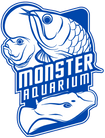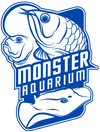Blue Fin Goby (Rhinogobius shennongensis)
The Blue Fin Goby, also known as the Shennong Goby, is a rare and stunning species of freshwater goby native to East Asia. It is highly valued for its vibrant colors, small size, and unique behavior, making it a favorite among specialized aquarists.
General Description
• Size: Grows up to 2–3 inches (5–7.5 cm), similar to other Rhinogobius species.
• Body: Slender, elongated body with distinctive patterns.
• Coloration: Features a pale base color with blue highlights on the fins, especially prominent in males. The fins often display a gradient of blue hues with occasional red or orange accents.
• Sexual Dimorphism: Males are more vibrant and colorful, particularly during the breeding season, while females tend to have subtler tones.
Habitat
• Native Range: Found in streams and rivers of China, particularly in regions near the Shennongjia forest reserve.
• Environment: Prefers cool, clear, fast-flowing streams with rocky or sandy substrates.
• Natural Conditions:
• Well-oxygenated waters.
• Presence of rocks and crevices for shelter and breeding.
Behavior
• Temperament: Generally peaceful, though males can be territorial during breeding.
• Activity: Bottom-dwelling and spends most of its time resting on or near rocks.
• Diet: Omnivorous with a preference for protein-rich foods:
• Aquatic insects and larvae.
• Crustaceans, such as copepods or amphipods.
• Algae and biofilm growing on surfaces.
Aquarium Care
• Tank Size: Minimum of 20 gallons for a pair or small group. Larger tanks are recommended for multiple males to avoid territorial disputes.
• Water Parameters:
• Temperature: 65–75°F (18–24°C); cooler temperatures are ideal.
• pH: 6.5–7.5 (neutral to slightly acidic).
• Hardness: 5–12 dGH.
• Water Flow: High flow is essential to mimic their natural environment. Use a powerhead or strong filter.
• Tank Setup:
• Provide rocks, driftwood, and caves for hiding and breeding.
• Substrate should be sand or fine gravel.
• Plants are optional but can add shade and shelter.
• High oxygen levels are critical, so use strong aeration.
Breeding
• Exhibits fascinating breeding behaviors:
• Males create burrows or guard crevices under rocks or other structures.
• Females lay eggs in these protected areas, and males guard them aggressively.
• Eggs hatch into free-swimming fry, which require tiny live foods like infusoria or baby brine shrimp.
Compatibility
• Tankmates:
• Peaceful, similarly-sized fish such as danios, white cloud mountain minnows, or other small gobies.
• Avoid larger or aggressive species.
• Works well in species-only tanks or with other Rhinogobius species
| Size |
1.5-2" |
|---|



